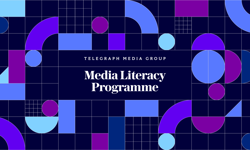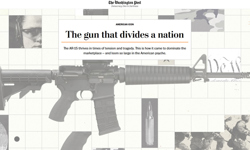Over the next ten years, we will begin to move towards Web 4.0 and the emergence of the ‘societal web’. Publishing will move from telling to listening, from informing opinion to collaborative insight, from one to many and from mono-media to infinite-media. The challenge for publishers during this inevitable transition will be on how they can continue to maintain the income stream and adapt to the changing world of media.
The Past and the Present
Web 1.0 was a read-only, publisher led world. The role of media was to broadcast and for the reader or listener to be informed passively, without any real ability to comment or give a response. Whilst some reader interaction existed, it was generally through ‘Readers Letters’ which were both selected and edited to ensure that they fitted the culture of the publication.
Web 2.0 was a more public author led environment, where people were empowered to read and then write, expressing their views, thoughts and opinions. Publishers chose either to heavily moderate user generated content or to lose some control. Some rely on the cultural reach of the publication within its readership to keep things in ‘style’. Users became engaged as part of the opinion forming process.
Web 3.0 will be a user-led experience. Consumers now extract content through the semantic ability of the web as it begins to understand the context of content. Consumers now pull detail from one site and reform, transform and re-present it in other websites where the content is no longer culturally consistent with the source. It’s the equivalent of being able to read, write and execute the content.
Losing, or sharing, or empowering control
New technologies mean publishers may lose control of the look and feel of their content. However, don’t engage and there is a real risk that your reach and visibility will remain small. High visibility, extensive reach, deep brand recognition are all key features of successful publishing, and it’s reasonable to assume that they will also be needed in future, irrespective of the media of delivery, too. Content will remain highly traceable though, at least thus far.
Web 3.0 also raises intellectual property and content ownership issues. The development of ‘cloud’ computing, where the data and the processing of the data are conducted in the ‘cloud’, means that you can’t ‘own’ the processing, and the data passes from one machine to another without reference to either ownership or geography. Data has become both ubiquitous and permanent. User generated content can be searched, found, quoted and reused, without reference, and without context.
Is this a recipe for anarchy? Or a building block of collaboration that leads to shared knowledge and improved insight?
In my opinion, this leads us to a development of sharing, of collaborating, in a community environment, by all, for the benefit of that community. It’s an environment where providing the knowledge, the means of understanding it (the semantic descriptions), and the facility to manipulate and re-present it enables the community to gain new insights and grow and develop as a society, a community. Those who gather around your ideas and subject matter become your society, your community, but they set the context and the culture; it’s no longer defined by the owner of the infrastructure.
This is the societal web.
Changing Face of Media
Advertising is having to adapt to the change from broadcast to narrow-cast. Permission marketing is something Seth Godin wrote about in 1999, but it’s still not that common. Permission advertising is now beginning to develop and becoming more innovative. For example, Carling’s iPint application for the iPhone has been outstanding at getting the Carling brand seen by millions of eyes through a game.
As an example of ‘old style’ advertising designed for Web 1.0, and holding on in Web 2.0, banner adverts are becoming less noticed, and even blocked, by many. Click-throughs are declining; advertising monitoring firm EyeBlaster reported that click though rates declined from 0.75% to 0.27%, a 64% reduction.
Many are searching for new ways to follow their customers, particularly through social networking sites. Facebook, recently announced that it was opening up key pages to allow for contextual (semantic) advertising, and that will, increasingly, be how all content is delivered to consumers. By studying the buying habits of consumers and matching to reading, writing and interaction on the measurable parts of the multi-(infinite)-media experience, media companies can deliver targeted, relevant, context driven content that’s much more likely to meet the personal needs of the individual.
The point of all of this is that whilst printed media is not about to disappear, it is geographically limited. Online, however, geography has less (perhaps no) meaning so the right titles can grow globally. To do so, you need the right people to be talking about you at the right time to many.
Why do people talk about you?
There are primarily three reasons for media companies engaging with social environments and these are;
* Knowledge
* Entertainment
* Product / Brand empathy
As we move from Web 1.0 where people ‘consumed’ (ie read) your content, one or two of these was often enough to attract people to visit, and the commonest measure was ‘traffic’. Advertisers paid (and still do) for page views, so high visibility and frequent ‘attendance’ was important. In Web 2.0, engagement became important; advertising became more contextual. In Web 3.0, we’ll see a stronger drive towards contextualization of content and advertising, matching to meaning. We’ll measure relevance.
From there, the buying habits of the other members of the community, of the ‘society’, will drive the content and advertising that we see. After all, if those we know (and like) are consuming something, we’re likely to consume it too.
Perhaps the biggest impact on a publication of losing control is what place the editor has when the content is provided by customers. The answer lies in the actions that they’ll take, in the way that they interact. The successful become guardians of the ethos not controllers of content.
Mark Zuckerberg, CEO of Facebook, recently announced Facebook Connect, which encourages:
* Trusted Authentication – Connect your site to the consumer via Social Media Authentication.
* Real Identity – Take your identity information with you wherever you go on the net.
* Friends Access – Stay connected to your friends wherever you go.
* Dynamic Privacy – access privacy controlled in one place.
But is that what social media sites want? Or is it what they have to accept?
The biggest question for publishers is how will you use the data you get access to? For example, will you advertise differently to someone who is well connected than someone with few ‘friends’? Will you identify the things that your readers are reading and talking about elsewhere and present a different face of your product that is tailored to their needs? Targeting advertising becomes social recommendation.
Is it likely that those who do this the best will be the most successful? Could your niche reach a wider audience for whom your subject is an occasional interest? Could it then make it “sticky”? If an article in your publication is commented on by two or three of my friends then it’s likely to be of interest to me too. Media companies that present that story first make their site instantly more useful. I save time searching for the good stuff, because you’ve delivered the identification of relevance to the ‘social cloud’, do it well, and I’ll keep coming back.
Examples of this already happening are sites like Last.fm where the music that is played next is identified from those who like what is being played now. What you listen to is captured too and can be fed back via your social network.
Conclusion
So, in summary, we are heading to a society led world online, a societal web, where content will be collated and drawn together as much by the collective actions of the communities in that society as it will be by providers of the content. Publishers have always gathered content and re-presented it in their house style and with their “house” opinion. Increasingly, they have to provide the means of gathering it and empower their communities to use the developing semantic tools to guide the presentation. In future, that empowerment will lead to the most successful being those who serve the needs of the communities they gather around them, leadership will become a skill that derives from consensus and influence, from collective recognition of the benefits you bring. Media will become very diverse, and the successful will be present where their audience want them, rather than trying to attract their audience to where they are.
Important activities will no longer be selection and editing what to publish (think Wikipedia), but how to engage and embrace others’ views and opinions. Presentation won’t be controlled as it is now, and the look and feel of the content will depend on the devices used and the approach taken in software that you no longer control. Skills to contextualise material effectively are key.
Understanding the audience, always a key requirement, becomes essential, and more, it’s no longer enough to understand your customer, but also to understand those that they know, like, and trust, and those who influence their behaviour and activity.
Change is a constant, and much is, and always has been, changing in the field of publishing, in its widest sense. Those who embrace change, who take courageous steps to reach the future, will gain the trust of those they support and they can then ensure that they remain in the forefront of their markets. It’s an exciting time.










